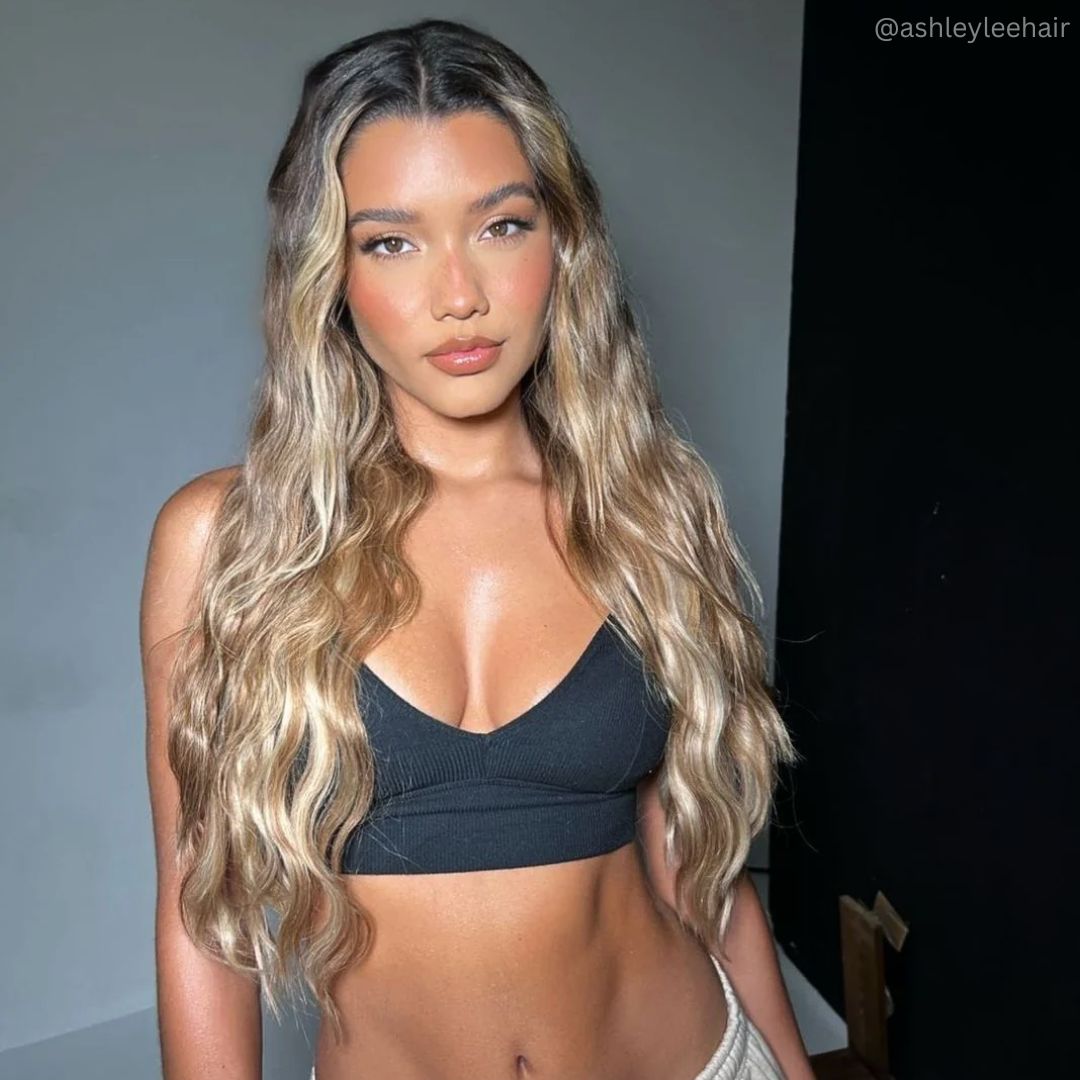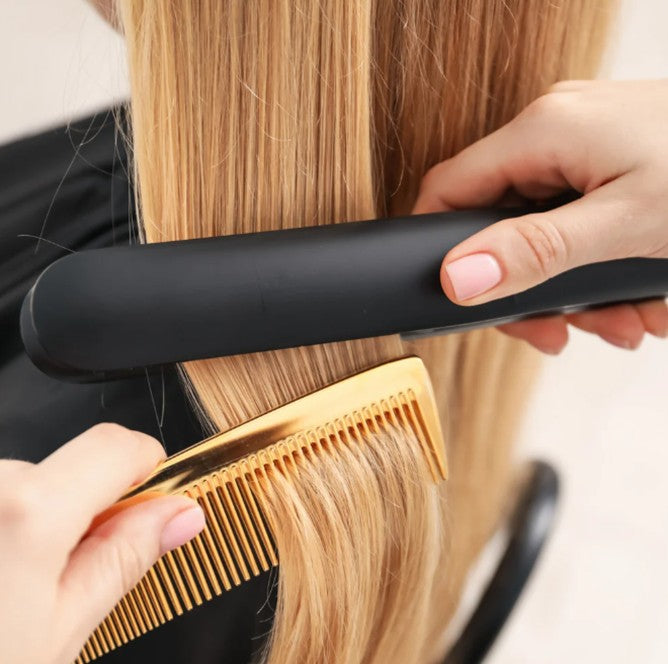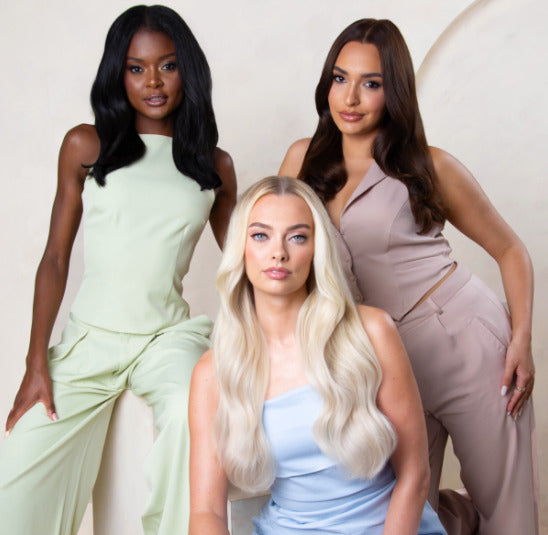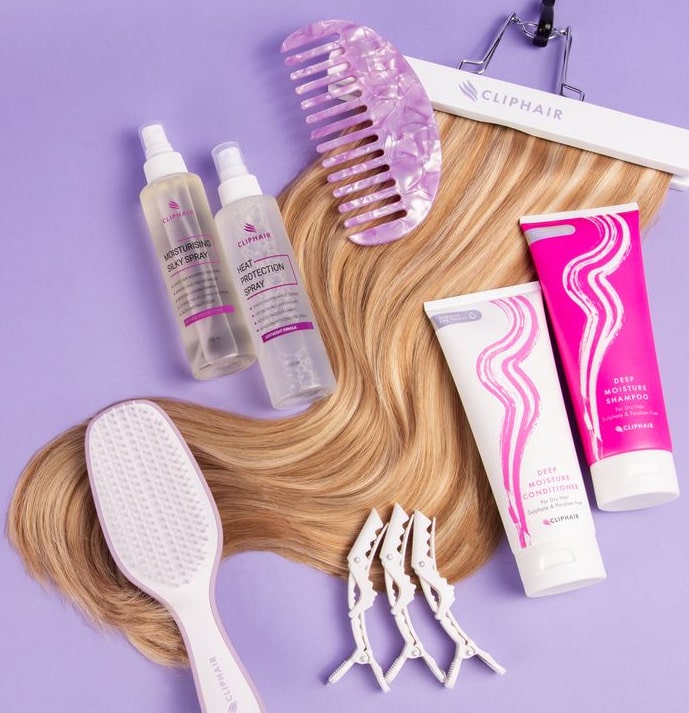The History Of Curly Hair
by BRENDA L. / 30. MÄR 2023

Reading Time: 6 Minutes
Index
From ancient times to modern-day movements, curly hair has made a profound impact on society, culture, and identity. Curly hair extensions and wigs have been part of this narrative, reflecting the evolving attitudes towards natural hair. Join us as we delve into the rich history of curly hair, exploring its cultural significance and celebrating its timeless allure, with a nod to Cliphair's diverse range of extensions, including clip-in, tape, and double drawn options.
Why Do Some People Have Curly Hair?
Well, time to go back to the origins of humanity. At some point in the history of our evolution, the human race shed their bodily hair (or fur). Some scientists and researchers believe this is to help combat the spreading of parasites. A healthy, parasite-free bare body also promoted an individual as a better mating choice compared to someone covered in fleas and lice; on top of that, as the human race began its travelling and exploring, a hairless body helped them manage their temperature better, regulating body heat by sweating.
But then, why did we keep hair on our scalp?
There are many theories about it. Of course, one of the main reasons might still be related to temperature. One of the major characteristics of the human race is the evolution that happened not on the outside of our bodies, but on the inside – more precisely, inside our brains. The human brain is unique, and needs unique protection from factors such as… The hot sun.
Travelling long distances in the daylight helped them stay safe from predators lurking at nighttime, but it had a downside: it put our heads in danger because of the sun. Therefore, keeping our scalp sheltered with a thick mane sounds logical, from an evolutionary perspective. And curly hair played a massive role in this.
Because of its natural shape, curly hair dissipates heat quite quickly and ensures a better temperature regulation compared to straight hair or bald heads – which are the ones that need particular attention under the sun. Curly-haired people need to sweat less to release heat and cool off, helping them retain water in hot temperatures. This might be why curls are way more common among people that live in notoriously hot countries such as Africa, the Middle East, South America, parts of South-East Asia and Mediterranean countries. It is possible that having curly hair in the early days of humanity might have been a life-saving characteristic, up until the point our species migrated to different climates defined by cooler temperatures, and lost their hair texture.
Nowadays, curly haired people are characterised by a dominant gene, whilst straight hair is usually the result of a recessive gene. Genetics affect your hair follicles, and the way your hair grows out of your scalp also determines the shape it will grow out in.
Curly Hair As A Fancy Accessory
Let’s fast forward a little. Around 1600, curly wigs spread around as a fancy accessory for wealthy and elite people in France, and this trend went on well into the following century. As King Louis began to lose his hair, he ordered the fabrication of elaborate, big wigs characterised by an abundance of long, bouncy curls to compensate for his own hair loss. As British society was heavily influenced by Parisian fashion, Englishmen started to cover their heads in curly wigs too. This was also due to the association of balding scalps and hair loss with syphilis. And no nobleman wanted to be thought of having contracted this infamous disease!
The First Paddle Brush
In the early 1900s, more specifically in the 30s, the first paddle brush for curly hair was created. We owe the invention to John Denman Dean. This type of hair brush is designed to specifically style naturally curly hair without harming its gorgeous natural texture nor pulling and tugging on your locks or hurting the scalp.
Farewell, Curls… Or Maybe Not?
During World War II, women had to ditch their rollers and artificially-obtained curls for more practical updos as they were often involved with heavy-duty work and factory jobs.
But during the 1950s, curls became big again – especially thanks to Hollywood stars such as Marilyn Monroe and her famous pin curls. Women all over the world wanted to recreate her look and often resorted to heat-based styling to get what is now commonly known as the pin-up look.
Natural Hair Forever
The 1960s have been an extremely important time for curly hair, as the Black Is Beautiful movement peaked. Fighting for equality, freedom and justice for black people all over the world, the movement brought attention to how the natural texture of black hair had been subject to injustice and discrimination. The “afro” hairstyle became the symbol of liberation and pride. Many artists, celebrities and important historical figures, Angela Davis, Nina Simone, Marsha Hunt, Diana Ross and even a very young Michael Jackson adopted natural hair as their look of choice to embrace their origins and affirm their identity.
This went on well through the 70s, where people of any ethnicity embrace big hair – some for cultural reasons, some other as a fashion statement to reject the norm of straight hair.
The 80s Curly Culture
The 80s decade is well known for being a colossus of musical and artistic expression. It was the age of change, both political and cultural, and curly hair was still widely sought-after by people who haven’t been blessed with naturally-textured tresses. In the mid 80s, Ouidad released products specifically designed to care and style curls, to make it easier for naturally curly-haired individuals to care for their hair pattern rather than taming it or managing it after relaxing it or altering it in any way. Jheri curls became extremely popular and were adopted by a number of musical artists of the era, including Michael Jackson and the rapper Ice Cube. Later on, during the 90s, tight curls and crimped hair became a widely diffused fashion statement. Thanks to curling wands and hair crimpers, straight-haired people started recreating the looks seen on celebrities such as Mary J Blige and Mariah Carey.
Curly Hair Nowadays
The natural hair movement survives to this day, although what one wants to do with their own curly hair is a personal choice and perming, relaxing, styling and using curly hair extensions or wigs is widely accepted (when done in a culturally-sensitive, sensible way). If you're using curly hair extensions, make sure you read everything you need to know about how to handle them in our dedicated blog: Curly Hair Extensions: Do's And Don'ts.
Caring for natural hair and curly hair in general has become easy and most importantly more affordable, with a huge rise in interest in DIY hair mask recipes, air-drying techniques and protective styling methods.
If you’d like to know more about how to care for your curly hair, read our dedicated blog: 10 Protective Hairstyles For Curly Hair: 3B To 4C Edition.
Conclusion:
Respecting and caring for every hair type and texture is paramount, and understanding your own hair pattern can guide you to the ideal hair care regimen. Delving into the history of curly hair unveils a rich heritage that underscores the beauty and significance of this unique texture. At Cliphair, we celebrate the diversity of curls and offer a range of curly hair extensions designed to enhance your natural beauty. Whether you're looking to add volume, length, or definition to your curls, our extensions are tailored to meet your needs. Embrace your natural crown and explore our collection of curly hair extensions to amplify your ringlets with style and confidence.
FAQs
Welche Arten von Haarverlängerungen bietet Cliphair?
Cliphair Bietet eine Vielzahl von Haarverlängerungen, einschließlich clip-inAnwesend tape-inAnwesend double drawnUnd dauerhafte Erweiterungen, die sich für verschiedene Bedürfnisse und Vorlieben befriedigen.
Werden Cliphair -Erweiterungen aus echtem menschlichem Haar hergestellt?
Ja, alle Cliphair -Erweiterungen werden aus 100% realem menschlichen Haaren hergestellt, um ein natürliches Aussehen, ein natürliches Aussehen und eine Haltbarkeit zu gewährleisten.
Wie wähle ich den richtigen Verlängerton aus, der zu meinen Haaren passt?
ClipHair bietet einen umfassenden Farbübereinstimmungsservice, mit dem Sie den perfekten Farbton für Ihre Erweiterungen finden können. Sie können auch unsere umfangreiche Farbpalette untersuchen und von unseren Experten nach Anleitung für eine nahtlose Mischung suchen.
Wie lange dauern Cliphair -Erweiterungen?
Mit ordnungsgemäßer Pflege und Wartung können Cliphair -Erweiterungen zwischen 6 und 12 Monaten oder sogar länger dauern, abhängig von der Art der Erweiterung und der Art und Weise, wie gut sie betreut werden.
Suchen Sie makelloses, salonwürdiges Haar, ohne die Bank zu sprengen? Bei Cliphair haben wir für Sie luxuriöse Clip-In-Haarverlängerungen für schnelle Transformationen und dauerhafte Haarverlängerungen für langanhaltenden Glamour. Extensions benötigen besondere Pflege und Wartung, um ihre Qualität zu erhalten. Deshalb haben wir alle erstklassige feuchtigkeitsspendende Haarpflegeprodukte erforderlich, um Ihren Stil auf den Punkt zu bringen.
Brauchen Sie den perfekten Farbton? Stöbern Sie durch unser komplettes Sortiment an Echthaar-Extensions in über 70 satten, seidigen Farbtönen oder schauen Sie sich unsere KOSTENLOSER Express-Farbabgleichservice um jedes Mal eine nahtlose Mischung zu gewährleisten.






